Emilio Pedron: faithful to ourselves, without stereotypes.
Intervista a Emilio Pedron: fedeli a noi stessi, senza stereotipi from SGA Wine design on Vimeo.
Managing director of Bertani Domains, Emilio Pedron, was born in Cles in Val di Non in 1945. After completing his studies in oenology at the Agricultural College of S. Michele all’Adige, he moved from Trentino to Valtellina to take up the position of director at the Nino Negri winery. During the 1980’s, his career took him to the Lamberti winery in Veneto, after which he became the managing director of the Gruppo Italiano Vini in 1996, where he remained until 2010. From 2003 to 2009, Pedron was the president of a consortium for safeguarding the wines of Valpolicella, where he actively worked to obtain the DOCG quality assurance denomination for Amarone.
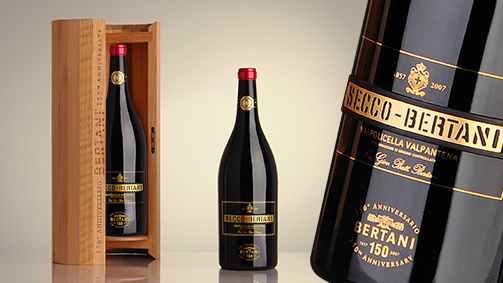
Special edition
Mr Pedron, how did your career in the world of wine get started?
I’ve been living in this world practically my whole life: my father had a small vineyard in Trentino, so I’ve been around grapes and wine since I was born. My professional career, which has taken me all around Italy, has also allowed me to learn and improve: starting from a small winery I’ve gone on to direct an important group, perhaps the most important group of Italian wineries.
Based on your experience, how has the consumers’ perception of the wines produced by the Bertani company changed over time, and how has the way they communicate with the consumers evolved?
I believe that Bertani is a really exceptional and atypical case: it is a brand that was created in pursuit of quality, with a particular and recognisable style that it has managed to maintain over the years. Not only has the company been able to preserve it, but we have consumers that recognise and seek out this style. This is our great strength and, if you like, also our handicap: we are characterised so strongly by our admirers that we find it hard to find new ones among younger consumers. The loyalty and attachment of our consumers remains nevertheless one of our biggest advantages: God help us if this changes.
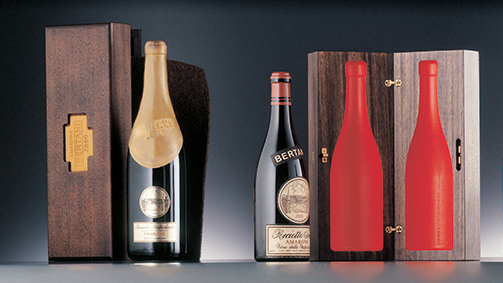
Special edition
In a recent interview, you criticised the excessive importance that producers give to using the price tag as a leverage tool in marketing. Do you think that the packaging and the marketing of a wine are fundamental characteristics in promoting the values and implicit meanings of a product? Can the ‘wrapping’ of a wine influence the perception of its quality?
I think that Italian wine has a relatively brief history on the global market, having only recently been introduced to foreign consumers compared to French wine that was exported centuries ago. We therefore have to rely on a tradition, a history, and an ability to appeal to less sophisticated markets. For this reason, many producers only know how to use the price as an element of competition. But using price as leverage is very difficult and very risky, since it tends to create a pricing war. The average price of Italian wine sold abroad is half that of French wine, and this says it all. We need to learn to distinguish our products and compete with added value that goes beyond the natural quality of the wine, and to do this one certainly needs to know how to communicate in a modern and articulate way.
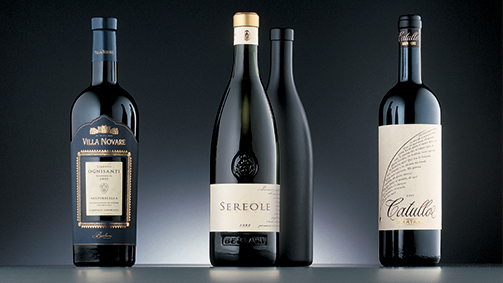
Packaging design
What are Bertani’s ambitions in reaching more interesting markets, and for which wines?
Due to the characteristics of the entire range of products of the company, the most interesting markets are the more mature ones: Italy, the United States, Canada, the U.K., Germany. And then a lot of more recent markets such as Japan, Russia, and ex-soviet countries. In any case, anywhere we sell in the world, we appeal to the more expert consumer who recognises our style and can appreciate our quality. Therefore we have to work hard to maintain our image and not to let down our current consumers.
Considering the important work you did for the Consorzio Valpolicella, what tools can a territory use to promote itself and how can the various companies organise themselves to compete on international markets?
That’s an interesting question. “Valpolicella” is a collective brand, a brand that belongs to a great many people and a vast territory. In general, the difficulty in managing collective brands lies in having to take into account the behaviour of a lot of individuals and a lot of companies. I believe there are two elements that are key to raising the value of collective brands, and therefore also of Valpolicella: one is to preserve the natural beauty of the territory, protect its historic value and traditions, and translate the quality of the region as a whole, not only in relation to wine productions, but with regards also to agricultural production, tourism, and hospitality. The other key element is the behaviour of the producers and all parties involved in the production of, in this case, Valpolicella. This behaviour should be as cohesive as possible and aim for common objectives. This is the most difficult thing, since producers are all very different: small, big, historic or fledgling companies. Each producer sees things in their own way and acts differently. This is one thing that distinguishes the Italian territory from the French: unlike the Italians, who are much more individualistic, the French are used to pursuing the same qualities, the same objectives.
The territory of Valpolicella and of Amarone have been great examples of success over the past twenty years, and thus today they are perhaps more at risk than others, since from success comes even more autonomy and individualism in the way producers operate.
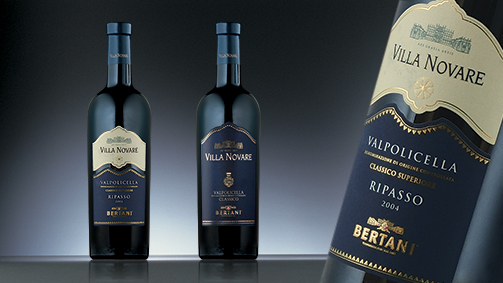
Packaging design
In your opinion, how should the marketing of a wine change in relation to markets, considering their profound differences?
I believe that if you want to keep up today, you have to develop your own know-how on two main fronts. One is the product, which must be innovative and at the same time be able to faithfully represent the territory. The other is to know the markets. Often wine producers focus on just one of the two, whereas bringing these two elements together, in my opinion, is the real key to success.
We have to innovate with our products, while still adhering to the characteristics of the territory from which they come and making most of the value of these roots, which are often ancient. On the other hand, we have to know the markets we are catering to: first of all the distribution, but also the attitudes towards consumption. Finally, many people mistakenly believe that we must produce for the market. This is wrong, since in our case we would have to adapt our typical wine to the market we a catering to, and in doing this we would lose our distinctiveness, the traits that characterise quality Italian products on the whole. Nevertheless, it would be just as foolish to produce our wine, from Valpolicella to Amarone, without knowing the consumers or the markets we are targeting. By combining these two aspects, we can develop all elements of the marketing in a way that suits the product and the market: the pricing, the packaging and presentation of the product, and the communication.
We mustn’t forget that today, from the marketing point of view, the behaviour of the producer is key. With the arrival of the internet and new technologies, the new generation of consumers often learn about the history of the wines online, instead of tasting them. The producer’s ability to present itself, to tell its story and to be credible, becomes as important as having a quality product to let new consumers taste.
You have always had a very broad vision of the world of Italian wine, first with the Gruppo Italiano Vini and now with Bertani Domaines. What do you believe are the best tools for approaching the current situation and scenarios that may arise in the future?
Today we have to be able to innovate and reinvent ourselves within our historic traditions. We must never betray our traditions, betray the territory: we must remain faithful to ourselves. However, within our tradition, our history, and our wine producing culture, we must also say and do new things. I believe that the world of quality wine has matured in the way it presents itself and tells its story and needs something new.
High quality wine, in Italy, was born twenty, thirty years ago. Since then, our history of the vineyard and the winery has become almost a common stereotype, we all tell the same story. We can go on about having more vines per hectare, low production per plant, soft pressing… this is old news by now. We need innovation, and above all we need to address the new consumer in a different language, with different adjectives, to tell the stories and convey the quality of our wine. We need to understand that we are talking to new and younger consumers, who therefore have a different perception of the value that consumers had in the past.
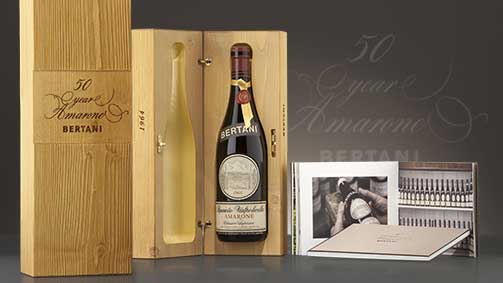
Special edition


